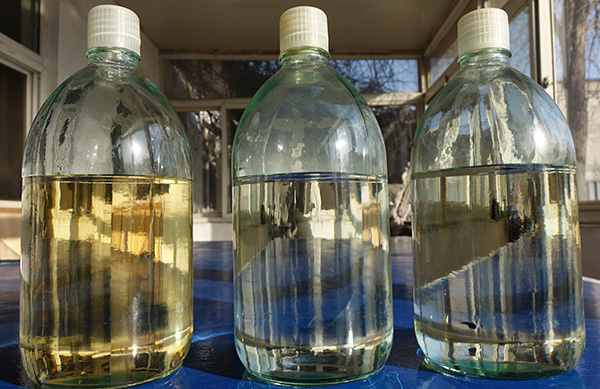Chemical & Physical Properties
- Appearance: Colorless to yellow fuming liquid
- Boiling Point: 91°C (195.8°F)
- Melting Point: -46°C (-50.8°F)
- Density: 2.64 g/cm³
- Vapor Pressure: 66.5 mmHg at 25°C
- Solubility: Reacts violently with water, forming hydrogen bromide (HBr) and boric acid derivatives
- Corrosiveness: Highly corrosive to metals, glass, and human tissue
Key Features & Benefits
✅ Strong Lewis Acid: Facilitates electrophilic reactions and halogen exchange reactions
✅ Efficient Demethylation Agent: Essential in organic synthesis and pharmaceutical processes
✅ Critical for Semiconductor Processing: Used in plasma etching and advanced electronic fabrication
✅ Catalyst & Reagent in Polymer Chemistry: Enhances chemical transformations and material properties
✅ High Purity & Consistency: Ensures reliable performance in industrial and research applications
Industrial Applications
Organic Synthesis & Pharmaceuticals
- Demethylation of Ethers & Aromatics: Essential for modifying organic molecules, particularly in the production of pharmaceutical intermediates. BBr₃ efficiently removes methyl groups from methyl ethers, phenols, and heterocycles.
- Selective Halogenation & Reagent for Boron Chemistry: Used in the synthesis of boron-containing compounds for specialized applications.
- Catalyst in Polymerization Reactions: Plays a role in producing high-performance polymers and specialty materials.
Semiconductor & Electronics Industry
- Plasma Etching & Chemical Vapor Deposition (CVD): BBr₃ is utilized in microelectronics fabrication for selective etching of materials like silicon and silicon oxides.
- Doping Agent in Semiconductor Processing: Used to introduce boron into semiconductor substrates for modifying electrical properties.
Industrial Catalysis & Material Science
- Catalyst in Organic & Inorganic Transformations: Used in hydroboration reactions, cross-coupling, and metal-organic frameworks (MOFs) synthesis.
- Boron-Based Material Processing: A precursor for the synthesis of specialized boron compounds, including those used in high-temperature ceramics and coatings.
Reactivity & Safety Considerations
⚠️ Highly Reactive & Corrosive!
- Hydrolysis: Reacts violently with water, releasing hydrogen bromide (HBr), a toxic and corrosive gas.
- Material Compatibility: Can corrode glass, metals, and organic materials; should be stored in specialized containers.
- Handling Precautions: Use in a dry, inert atmosphere (e.g., nitrogen or argon) to prevent hazardous reactions.
Handling & Storage
- Storage Conditions:
- Store in tightly sealed, moisture-free containers under an inert gas atmosphere.
- Recommended storage temperature: Room temperature, away from heat and moisture.
- Personal Protective Equipment (PPE):
- Chemical-resistant gloves, goggles, and protective clothing.
- Fume hood usage is required to avoid inhalation exposure.
- First Aid Measures:
- Inhalation: Move to fresh air immediately; seek medical attention.
- Skin/Eye Contact: Rinse with copious amounts of water and seek medical care.
Packaging & Availability
Available in:
- 1kg sealed cylinder
- Bulk packaging available upon request
Custom specifications and formulations available for industrial-scale applications.
Boron Tribromide (BBr₃) is a highly reactive, colorless to yellow fuming liquid with a strong, pungent odor. As a potent Lewis acid, it plays a crucial role in organic synthesis, semiconductor manufacturing, and catalyst applications. It is particularly valued for its ability to selectively remove methyl groups from ethers and its reactivity in halide exchange reactions.




